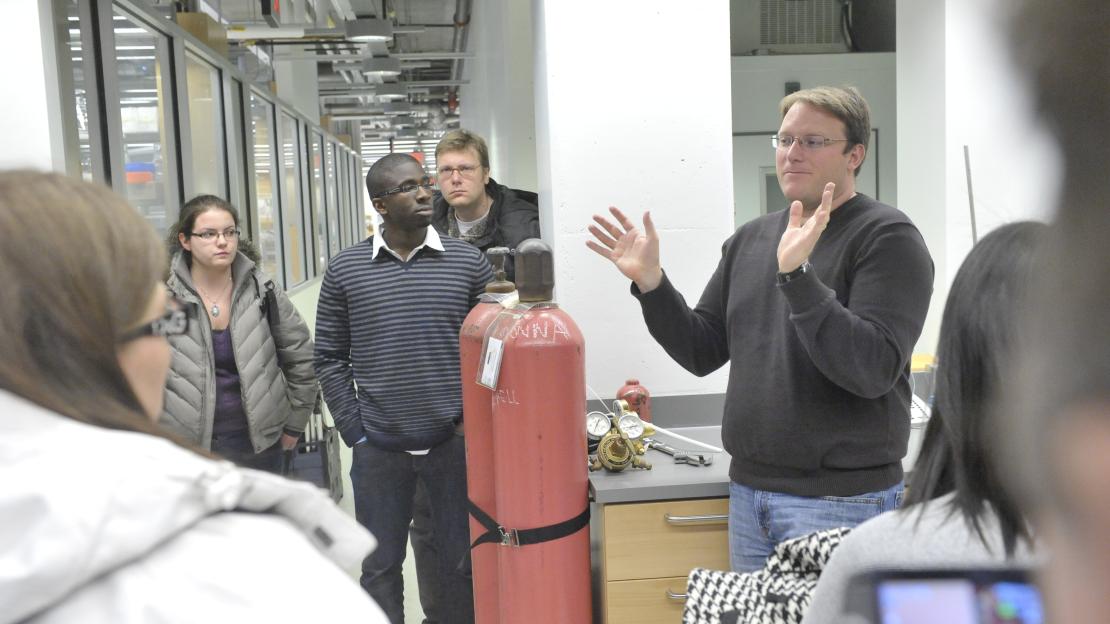If contaminants enter our environment, Associate Professor Carl Mitchell wants to know where they came from and where they’re going.
His research looks not only at the environmental consequences of natural and human-made changes to watersheds and wetlands, but much of his work also focuses on mercury cycling in the environment. The various contributions he’s already made in his career recently led Mitchell to receive the Young Scientist Award from the Canadian Geophysical Union (CGU).
“It’s nice to be recognized by your peers that you’re doing something well, but I think it’s also important for our university to be recognized,” says Mitchell, who was hired by U of T Scarborough in 2008.
“The CGU is the main professional organization in Canada for hydrology and biogeochemistry, so it’s a great honour and a place I feel most at home with my peers.”
Mitchell’s main area of research focuses on mercury cycling in the environment. It’s important to monitor mercury, which is emitted mainly through coal power plants, industrial processes and active volcanos, since it can last in the atmosphere for up to a year and can travel great distances. Once it works its way into the environment it can turn into methylmercury, notes Mitchell, which is most alarming from a human health perspective. As a neurotoxin that accumulates in the body over time, it’s been linked to various brain and nervous system disorders, and is especially concerning for fetal and infant cognitive development.
Currently, he’s collaborating with Professor Frank Wania, also from the Department of Physical and Environmental Science, to develop passive air samplers. The hope, Mitchell says, is to provide an inexpensive yet effective means to monitoring atmospheric mercury in areas of the world where cost and accessibility are a challenge.
“The air samplers we’re developing can operate without electricity and are fairly low tech, but they could be cutting edge in the sense that they can be deployed at the top of mountains or remote areas of the world without needing to be maintained.”
He points to the recent United Nations convention for reducing mercury in the environment, highlighting the need for countries that currently don’t have a mercury monitoring program, mainly due to cost.
Another area of Mitchell’s research focuses on hydrology, specifically how water is transported, how contaminants move around in water, and what sources of water are important for different types of contaminants.
One large project he’s currently working on is a collaboration with the Southern Ontario Water Consortium to look at the effects of contaminants like heavy metals and persistent organic pollutants in Mimico Creek, one of Canada’s most urbanized watersheds.
He also has a PhD student who is working exclusively on road salt and its effects on water quality, including how heavy metals are transported in the river. Mitchell adds what’s astonishing is that some areas of our fresh water can become so salinized during winter and spring melt periods that river water approaches ocean salinity for short periods of time. One of his goals is to eventually look at the biological impacts of this.
The Young Scientist Award was presented to Mitchell at the recent annual Canadian Geophysical Union meeting held in Vancouver May 28-31.
